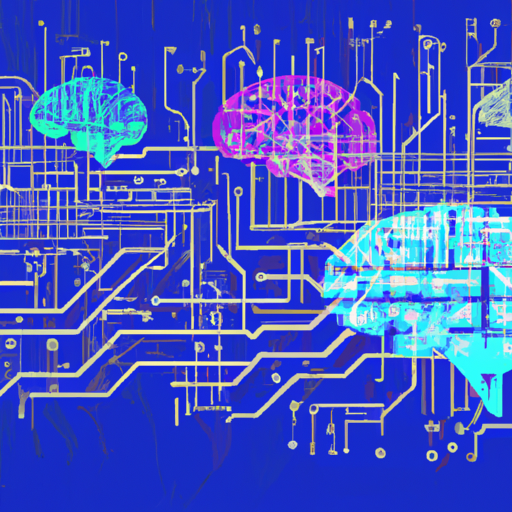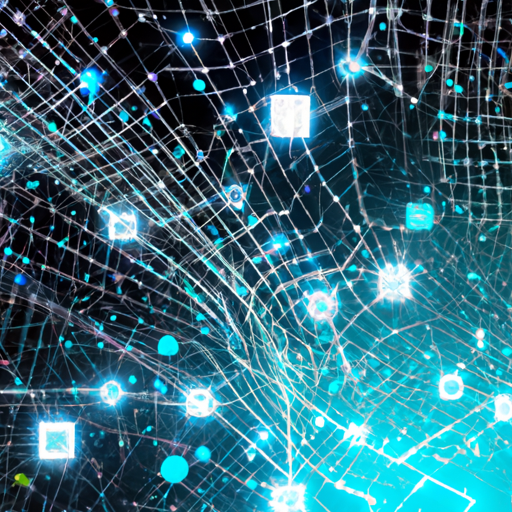Deep Learning Libraries
Are you venturing into the world of deep learning, seeking to harness the potential of automation? Or perhaps you are keen to unravel the wonders of machine intelligence and how it’s strengthening various industries across the world? In either case, you cannot bypass the significance of deep learning libraries and the vital role they play in these systems. Armed with the understanding of these libraries, you can unlock endless possibilities in projects ranging from natural language processing to advanced computer vision tasks. This piece aims to facilitate your exploration of deep learning libraries, providing you with comprehensive insights into their functioning – breaking it down into smaller, digestible sections.
Deep learning libraries are repositories that contain pre-written code, which developers can use to design complex programs around machine learning, without getting too absorbed into the nitty-gritty. Walking through this labyrinth of coding, architecture design, and optimization options can be strenuous, but with the aid of these libraries, developers are able to focus more on creating intricate and diverse models. Throughout this article, you will familiarize yourself with various deep learning libraries, understanding their strengths, weaknesses, and pertinent use-cases, allowing you to make an informed choice when you embark on your deep learning journey.
Understanding Deep Learning Libraries
Deep learning libraries are a crucial asset in the expansive world of artificial intelligence (AI).
Definition of Deep Learning Libraries
A deep learning library is essentially a repository of modules and functions, designed to expedite, streamline, and enhance the process of building, training, and deploying deep learning models. These libraries act as an abstraction layer over the lower-level languages, offering high-level, user-friendly interfaces which simplify complex tasks.
Importance of Deep Learning Libraries in AI applications
Deep learning libraries are critical for AI applications as they significantly slash development time and expedite innovation. Various essential tasks such as linear algebra, tensor manipulations, and optimization algorithms, which are vital for neural network architecture, can be executed effortlessly and efficiently owing to these libraries. Therefore, they provide the foundation for implementing AI applications in various fields, from autonomous vehicles to medical diagnostic software.
Breakdown of Typical Deep Learning Library Architecture
The architecture of a deep learning library can be broken down to understand its driving mechanisms.
Exploring Core Components of a Deep Learning Library
Core components of a deep learning library generally include: an interface for data pre-processing, a programming interface to construct diverse types of neural networks, a computational interface for executing operations on a wide range of hardware, interfaces for model training and validation, and finally a model serialization interface which helps in saving and loading trained models.
Functionality of Each Component in a Deep Learning Library
Each component plays a unique and significant part in the grand scheme of things: pre-processing of data ensures that it is in a usable format, the programming interface allows you to construct the necessary model for your specific task, the computational interface enables efficient task execution, interfaces for training and validation ensure your model’s accuracy and reliability, whereas the serialization interface safeguards the model for future use.
Popular Deep Learning Libraries
There are numerous deep learning libraries available, each with its unique suite of features.
Overview of Top Deep Learning Libraries
Some top deep learning libraries include TensorFlow, PyTorch, Keras, Theano, and Caffe. These libraries are highly sought after due to their rich capabilities and strong support communities.
In-depth Analysis of each Library and their Special Features
TensorFlow, developed by Google, is renowned for its flexibility and scalability, supporting a plethora of complex architectures. PyTorch, developed by Facebook, stands out with its dynamic computation graph feature, making it suitable for research and prototypes. Keras is loved for its simplicity and user-friendly nature, acting as a wrapper for libraries like TensorFlow. Theano is heralded for its ability in handling complex mathematical operations, while Caffe excels for image-related tasks.
Categorization of Deep Learning Libraries
Deep learning libraries can be segregated based on different criteria, facilitating better understanding and selection.
Library Categorization Based on Functionality
Some libraries, like TensorFlow, are comprehensive suites offering a broad range of features, while others, like Keras, prioritize simplicity and ease of use. Some target CPU-based systems, while others focus on GPU acceleration. This classification helps developers in picking an appropriate library for their specific needs.
Library Categorization Based on Performance
Libraries also differ in performance. Some like TensorFlow are famed for their scalability and are therefore preferred for heavyweight tasks, while others like Theano are mostly used for direct, one-off computations.
Working with Deep Learning Libraries
With a basic understanding of deep learning libraries, let’s discuss how to successfully work with them.
Process of Integrating Deep Learning Libraries into AI Projects
Integrating a library into an AI project involves data pre-processing, model building, training and testing, hyperparameter tuning, model evaluation, and eventual deployment. Reduction of friction in this process is one of the key reasons for using deep learning libraries.
Common Challenges and How to Overcome them
Working with libraries can sometimes be overwhelming, due to the steep learning curve, model interpretability, and compatibility issues. It is essential to lean on tutorials, open source projects and community support to overcome challenges and learn best practices.
Choosing the Right Deep Learning Library
Choosing the right library depends on your exact requirements.
Understanding Different Use-Cases for Each Library
Every library is designed with different use-cases in mind. Tensorflow is often preferred for production models due to its flexibility and ecosystem. Pytorch’s dynamic computation graph makes it favoured by researchers.
Evaluating and Comparing Libraries Based on Project Needs
Important considerations include the library’s ease of use, community support, and interoperability with other tools. Look at your project’s specific requirements and match them up with the capabilities of the library.
Deep Learning Libraries and Big Data
The intersection of deep learning libraries and big data is critical in this data-driven age.
Role of Deep Learning Libraries in Processing Big Data
These libraries can handle and process large datasets required for deep learning, enabling better model training and more accurate predictions.
Case Studies of Effective Big Data Management with Deep Learning Libraries
There are numerous examples of effective big data management leveraging these libraries. By using TensorFlow, organizations have successfully developed recommendation systems that sift through vast amounts of user data to deliver personalized recommendations.
Future of Deep Learning Libraries
Deep learning libraries will continue to evolve and play a significant role in the advancement of AI.
Current Trends in Deep Learning Libraries
Currently, trends point towards more user-friendly libraries that abstract many complexities of deep learning, allowing developers to efficiently implement solutions.
Predictions for Evolving Library Capabilities and Features
In the future, expect these libraries to offer improved optimization techniques, architectural innovations, and better tooling for model interpretability.
Community and Support for Deep Learning Libraries
A robust community is a great resource for any deep learning library.
Exploring the Developer Community for Each Library
Each of these libraries has a robust community of developers that could assist in improving your comprehension and usage of these tools.
Accessing Support and Resources for Effective Library Use
Most communities have a rich reserve of resources, such as tutorials, forums, and documentation, that could provide invaluable assistance when working with these libraries.
Conclusion
It’s clear that deep learning libraries are indispensable tools in the AI development landscape. They provide a more accessible entry into the world of AI and enable us to achieve results that would be enormously challenging, if not impossible, otherwise.
Summarizing the Value and Importance of Deep Learning Libraries
In conclusion, deep learning libraries are the building blocks of advanced AI applications that will drive the future.
Tips for Keeping Up with Future Developments in Deep Learning Libraries
Subscribe to newsletters, join related forums and consistently follow updates of these libraries to stay abreast with the rapid evolutions in this field. It is through continual learning and experimentation with these tools that one can truly extract their immense potential.


